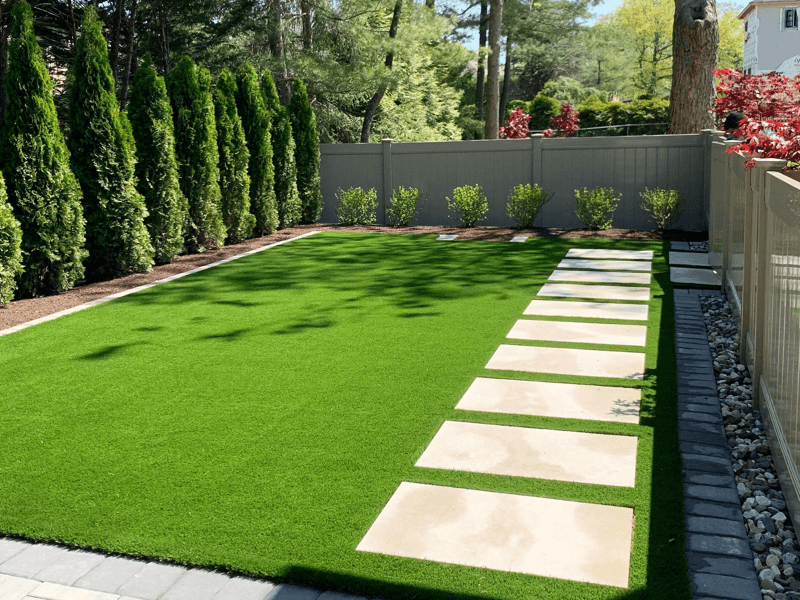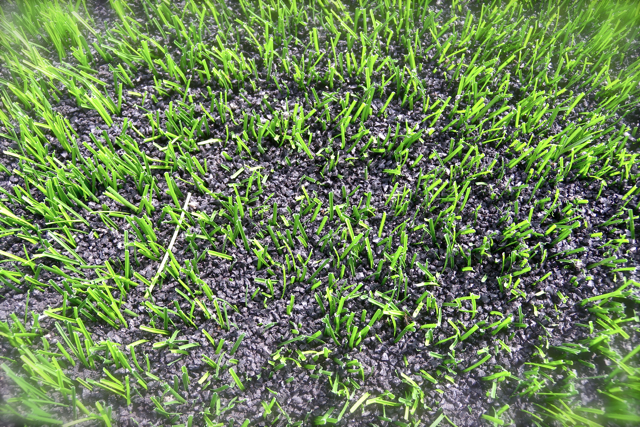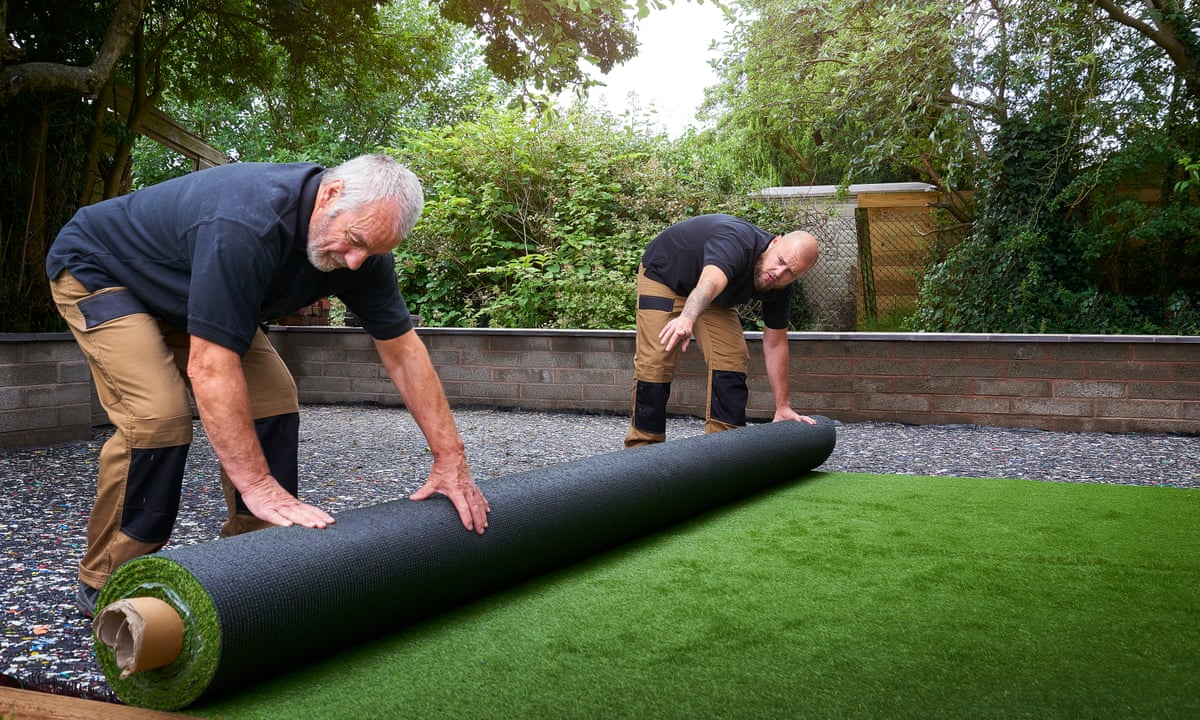Expert Arizona Turf Installation Services for Home and Commercial Use
Wiki Article
Delve Into the Environmental Perks of Opting for Synthetic Grass Solutions
The adoption of fabricated turf solutions provides an engaging opportunity to deal with pressing ecological difficulties. By significantly decreasing water use and minimizing the application of dangerous chemicals, these alternatives not only promote lasting landscape design however additionally safeguard regional environments.Water Conservation Benefits
One of the most substantial benefits of synthetic turf is its capacity to preserve water. In comparison, synthetic grass does not require watering, considerably reducing the general need for water sources.By removing the demand for normal watering, man-made lawn adds to lasting landscape practices and assists alleviate the ecological effect of extreme water consumption. The preservation of water extends to the reduction of runoff, which can lead to soil disintegration and river pollution.
In addition, the installation of artificial lawn permits districts and property owners to designate water sources much more effectively, concentrating on important usages such as drinking water and farming. The shift in the direction of synthetic grass not only promotes accountable water usage however additionally straightens with more comprehensive environmental goals targeted at protecting all-natural resources.
As communities progressively prioritize sustainability, the water preservation advantages of artificial grass provide an engaging situation for its fostering in domestic and business landscaping projects.
Minimized Chemical Usage
The shift to synthetic grass significantly decreases the reliance on chemical therapies typically made use of in all-natural grass upkeep. Traditional grass administration usually includes the application of herbicides, plant foods, and chemicals to promote development and control insects. These chemicals can present dangers to human health, regional wildlife, and the setting, contributing to dirt and water contamination.In comparison, synthetic grass removes the requirement for these harmful substances. As soon as set up, it calls for minimal upkeep, mostly including regular cleaning and occasional infill replenishment. This decrease in chemical usage not just profits the prompt environment however likewise adds to broader environmental stability. By minimizing the launch of synthetic substances right into the ecological community, synthetic grass advertises healthier dirt and water supply.
Additionally, the absence of chemical overflow connected with artificial lawn installments helps secure local waterways from pollution, supporting aquatic life and maintaining biodiversity. Phoenix turf companies. As areas progressively focus on lasting methods, going with synthetic grass offers a feasible service that aligns with ecological preservation objectives. With this shift, residential property owners can delight in lavish eco-friendly spaces without endangering ecological wellness, leading the way for an extra lasting future
Lower Carbon Impact

Furthermore, the installation of artificial lawn can cause substantial water preservation. Natural lawns need substantial amounts of water for watering, which not only contributes to the carbon footprint linked with water removal and therapy but also stress regional water resources. In contrast, synthetic grass requires marginal maintenance, needing no watering, thereby substantially lowering water usage and its associated energy costs.
Furthermore, the longevity of synthetic grass contributes to its decreased carbon impact. With a lifespan of approximately 15 years or more, the requirement for constant substitutes is diminished, causing less waste and lower power intake in manufacturing and getting rid of traditional turf alternatives. On the whole, synthetic grass presents a sustainable choice for environmentally conscious landscape design.
Habitat Preservation
Habitat preservation is an essential consideration in the debate over landscaping choices, specifically when contrasting artificial turf to all-natural grass. All-natural turf yards usually require considerable upkeep, including the use of pesticides, herbicides, and fertilizers, which can negatively impact neighborhood ecosystems. These chemicals can seep right into the soil and rivers, harming native flora and fauna and interrupting regional habitats.
On the other hand, fabricated turf presents company website a possibility to lower the environmental footprint of landscape design. By choosing artificial turf, home owners can reduce the disturbance of all-natural habitats related to standard grass treatment practices. Artificial grass removes the demand for damaging chemicals, thus protecting close-by wildlife and preserving the honesty of bordering communities. Furthermore, the installment of synthetic grass can lead to the conversion of previous turf areas into even more biodiverse landscapes, such as pollinator yards or indigenous plant areas, which can sustain local wildlife.
Ultimately, the change to synthetic grass not just preserves water and minimizes maintenance efforts however also cultivates a more harmonious connection between human activities and the native environment, advertising environment conservation in the process.
Long-Term Sustainability
Lasting sustainability is an important consider assessing the benefits of synthetic grass over typical lawn yards. Among the most considerable advantages of synthetic grass is its resilience; it can last approximately 15-20 years with minimal maintenance, whereas all-natural lawn needs constant reseeding and substitute. This durability reduces the requirement for constant sources, such as water, fertilizers, and pesticides, which are vital for maintaining a healthy and balanced grass lawn.In addition, artificial grass contributes to a decrease in carbon emissions connected with lawn treatment equipment. Standard grass usually call for gas-powered mowers, leaners, and blowers, all of which contribute to air pollution. Turf installation phoenix az. In comparison, synthetic grass gets rid of the demand for such equipment, advertising a cleaner setting
Additionally, the production of synthetic grass increasingly uses recycled products, improving its sustainability profile. As suppliers adopt environment-friendly my explanation practices, the environmental footprint of synthetic grass continues to decrease.

Conclusion
The fostering of synthetic grass remedies presents significant environmental advantages, including significant water preservation, lowered dependence on hazardous chemicals, and a lower carbon impact. Artificial grass aids in preserving natural environments by minimizing land disturbance and promoting long-lasting sustainability through the usage of durable products. Jointly, these variables highlight the potential of synthetic lawn to add positively to environmental wellness and provide a sensible option to standard landscaping techniques in a significantly resource-conscious globe.In contrast, artificial lawn does not require watering, significantly decreasing the general need for water resources. By reducing the launch of synthetic substances into the ecosystem, fabricated grass promotes healthier dirt and water systems.
In addition, the setup of fabricated turf can result in considerable water preservation. In contrast, man-made grass requires marginal maintenance, requiring no watering, thus dramatically reducing water usage and its connected energy expenses.

Report this wiki page